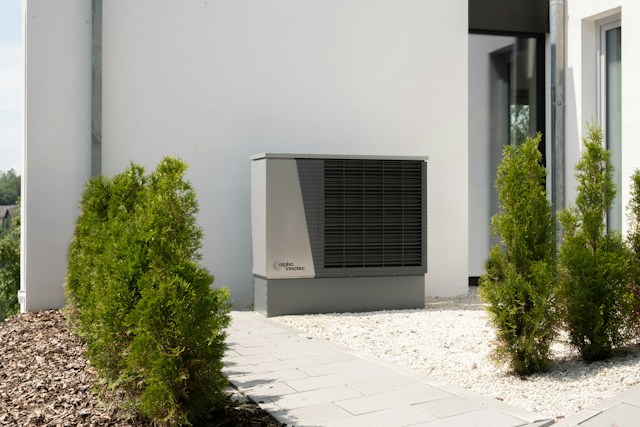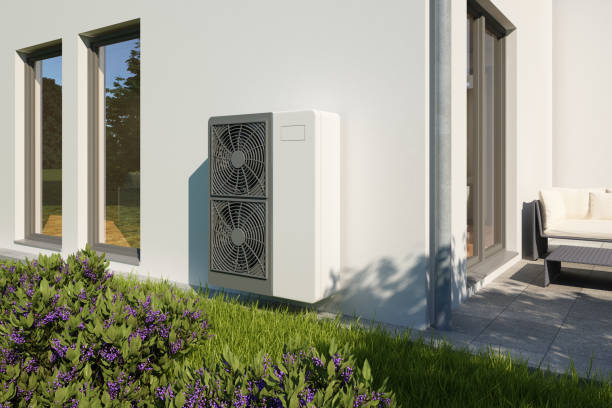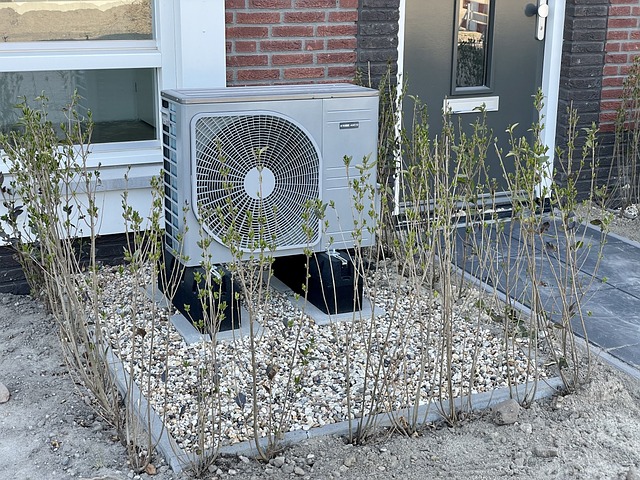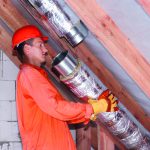Heat pumps are hailed as the next big thing to save the planet but there are downsides to consider if you plan on installing a heat pump in your new build or renovation project.
In this article we cover:
- What are heat pumps, with overview of the different types
- Heat pump downsides from expense to installation
- Sustainability credentials
- Planning and noise issues to consider
- Choice of heat emitters
- Checking if it’s suitable to work in cold weather
Expensive to install
Without a doubt the major disadvantage is the upfront cost. A heat pump costs significantly more than an equivalent gas boiler but prices are slowly falling as they become more mainstream. Grants are available, too, which can help.
Deciding on a heat pump brings with it expenses other than for installing the actual equipment itself. You’ll need a large, specialised water tank to store your energy gained from the air or ground; there are control systems and thermostats, and whilst the average heat pump rarely goes wrong, when it does you’ll need an expert. There are currently far too few people trained in either the installation or the maintenance of heat pumps and this shortage is keeping prices higher than they should be. If you don’t have space for a large tank, it’s possible to buy a heat battery.
The detailed heat calculations required before you can decide which kind of system and what size to go for, involves time and expense. And a heat pump may well only make sense once you have upgraded your insulation, heat emitters and airtightness.
[adrotate banner="58"]Difficult to install
Installing a heat pump, be it ground or air source, is a very specialised skill. Ground source and borehole versions also involve serious groundwork which adds both time and cost. A ground source pump will also require a large area of ground to bury the loops of collector pipe.
Of all heat pump installations, only about one in 10 is found in flats or very small homes. An alternative is an air to air system that warms air blown into the home. These products now dominate heat pump sales in France. They cannot supply hot water, so a separate system like a combi boiler will be needed.
Beware of sustainability
Some of the fluids (refrigerants) used for heat transfer are of questionable sustainability. Take advice on this to be certain you’re doing the best you can.
And given that heat pumps work on electricity it is very hard for them to be carbon neutral. This said, they can work well alongside solar PV systems. This combination can be very nearly carbon neutral.

Planning matters
Installing a domestic heat pump shouldn’t cause trouble with the planners. But you cannot take this for granted. Always check before starting on your heat pump journey. In both the ROI and NI the planners have rules about things such as noise levels; total size of the unit; where it is placed on the building; how close it is to the boundary; how much space it needs around it for air circulation; how much your soil level can be raised to incorporate ground loops; whether you are in a conservation area or if your house is listed. And so on.
Choice of heat emitters
Because heat pumps produce low temperature water they are best suited to underfloor heating as this has to run at low temperatures. Some heat pumps can deliver water at up to 70degC but then this has to be cooled to make it suitable for underfloor heating. This said, it is possible to use steel, cast-iron, or fan-assisted radiators; or fan-coil or thermal skirting with a heat pump.
Dealing with cold weather
Although air source heat pumps work by drawing heat from the air, they can, theoretically, work down to -15degC. However, they have to work harder to achieve this and so cost more to run than in warmer weather.
Cold weather efficiency can be boosted by making sure the pump is clear of any debris; having a smart thermostat to be sure you use only as much heating as you need; insulating your home really well; and making sure your heat emitters are properly sized.
In snowy weather a heat pump may not be able to work at all if the air intakes are obstructed. Once the pump itself becomes iced up, it calls on its internal heaters to melt the ice. This costs in electricity. Ground source loops and boreholes don’t suffer from problems associated with cold weather because their collectors are hidden.
Check the Seasonal Performance Factor of your heat pump if cold weather is likely to be an issue.

Heat Pump Downsides – Noise
Older and larger output models used to be noisy but today noise isn’t that much of a problem. For the noise sensitive, though, they can be a nuisance. They aren’t usually audible from indoors but certainly are when you’re outside, making about the same amount of noise as a boiler flue (45-65 decibels). Planning regulations in both ROI and NI govern how much noise is permissible at the boundary of your property. Such regulations wouldn’t be needed if they were completely silent.
Heat Pump Types
One of the most energy efficient options when it comes to heating, heat pumps come in many different models.
Most heat pumps work on the same principle. Extract energy (often with collectors such as pipes), then with a compressor run it through a refrigerant to get high grade energy at the end. Energy that you can use to heat your home, and in many cases your hot water too. By using one unit of electricity you get around four equivalent units of heat.
Air to water extracts heat from the air to heat water that’s then used for space heating and/or hot water. Cost effective, it is the most common system in use in Ireland.
Air to air extracts heat from the air to heat air. At its most basic, these come as wall mounted units that provide space heating only (or cooling as they tend to also work in reverse) for the room they’re installed in. Modern air to air systems can work in conjunction with heat recovery ventilation to extract more heat, and circulate heated air to all rooms. Works in passive or low energy homes (with low heating demand) and usually no more than 150sqm.
Geothermal extracts heat from the ground, either from soil (called a horizontal collector, where pipes are looped in the garden across approximately 2.5 times the square meterage of the house) or from deeper layers by boring holes, usually two (called a vertical collector or borehole). Collectors can also be placed in water, like a pond, stream or well. Geothermal heat pumps are considered the most efficient.




